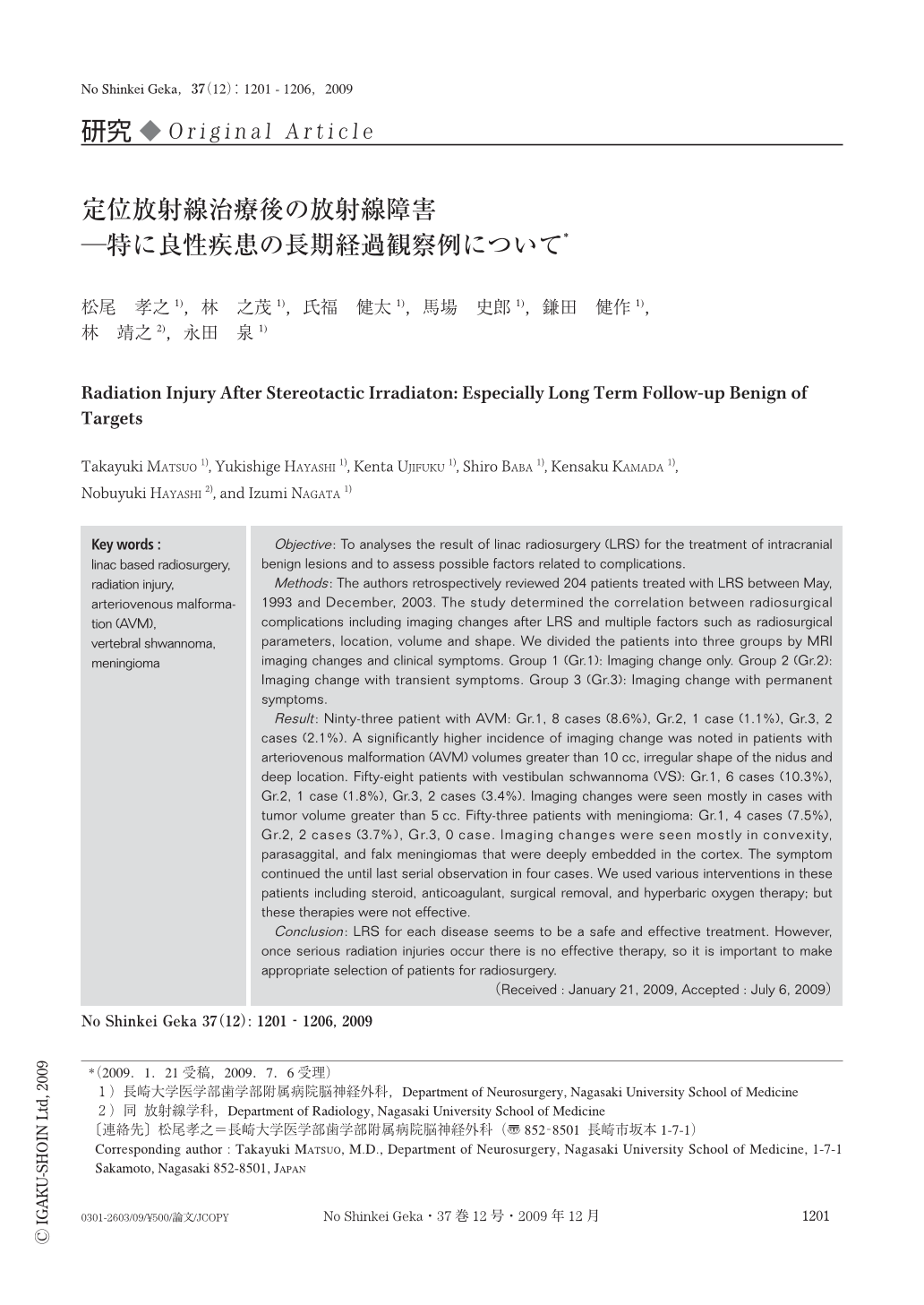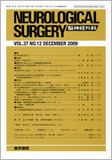Japanese
English
- 有料閲覧
- Abstract 文献概要
- 1ページ目 Look Inside
- 参考文献 Reference
Ⅰ.はじめに
良性病変に対する定位的放射線治療では長期的な放射線障害の出現とその治療は重要な懸案事項である.本報告ではlinac based radiosurgery後の放射線障害について,画像変化および臨床症状の出現に着目し,今後の治療計画において注意すべき事柄を検討した.
Objective: To analyses the result of linac radiosurgery (LRS) for the treatment of intracranial benign lesions and to assess possible factors related to complications.
Methods: The authors retrospectively reviewed 204 patients treated with LRS between May, 1993 and December, 2003. The study determined the correlation between radiosurgical complications including imaging changes after LRS and multiple factors such as radiosurgical parameters, location, volume and shape. We divided the patients into three groups by MRI imaging changes and clinical symptoms. Group 1 (Gr.1): Imaging change only. Group 2 (Gr.2): Imaging change with transient symptoms. Group 3 (Gr.3): Imaging change with permanent symptoms.
Result: Ninty-three patient with AVM: Gr.1, 8 cases (8.6%), Gr.2, 1 case (1.1%), Gr.3, 2 cases (2.1%). A significantly higher incidence of imaging change was noted in patients with arteriovenous malformation (AVM) volumes greater than 10cc, irregular shape of the nidus and deep location. Fifty-eight patients with vestibulan schwannoma (VS): Gr.1, 6 cases (10.3%), Gr.2, 1 case (1.8%), Gr.3, 2 cases (3.4%). Imaging changes were seen mostly in cases with tumor volume greater than 5cc. Fifty-three patients with meningioma: Gr.1, 4 cases (7.5%), Gr.2, 2 cases (3.7%), Gr.3, 0 case. Imaging changes were seen mostly in convexity, parasaggital, and falx meningiomas that were deeply embedded in the cortex. The symptom continued the until last serial observation in four cases. We used various interventions in these patients including steroid, anticoagulant, surgical removal, and hyperbaric oxygen therapy; but these therapies were not effective.
Conclusion: LRS for each disease seems to be a safe and effective treatment. However, once serious radiation injuries occur there is no effective therapy, so it is important to make appropriate selection of patients for radiosurgery.

Copyright © 2009, Igaku-Shoin Ltd. All rights reserved.


